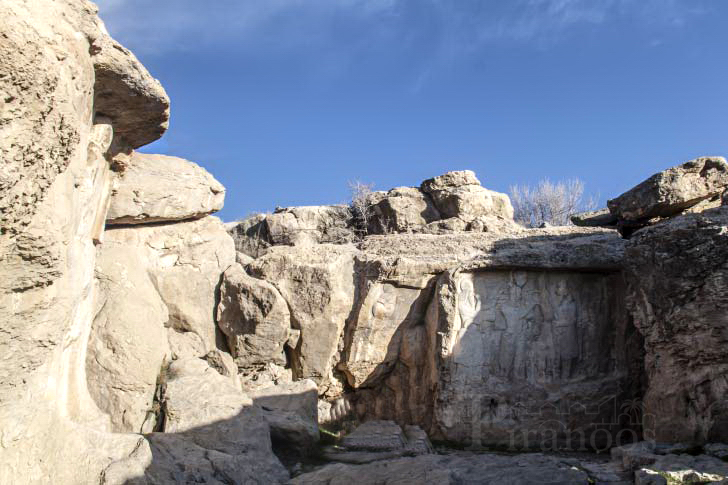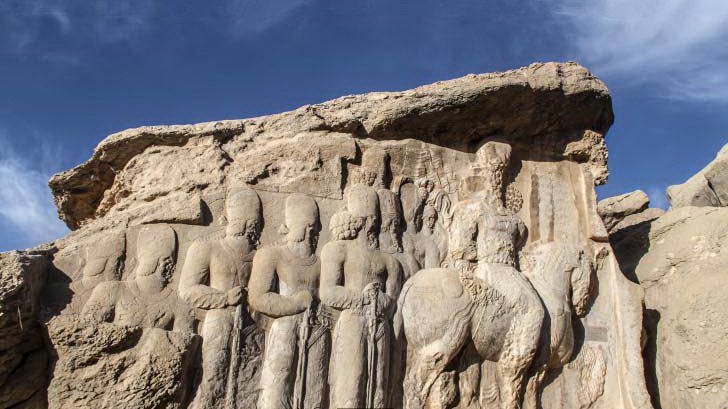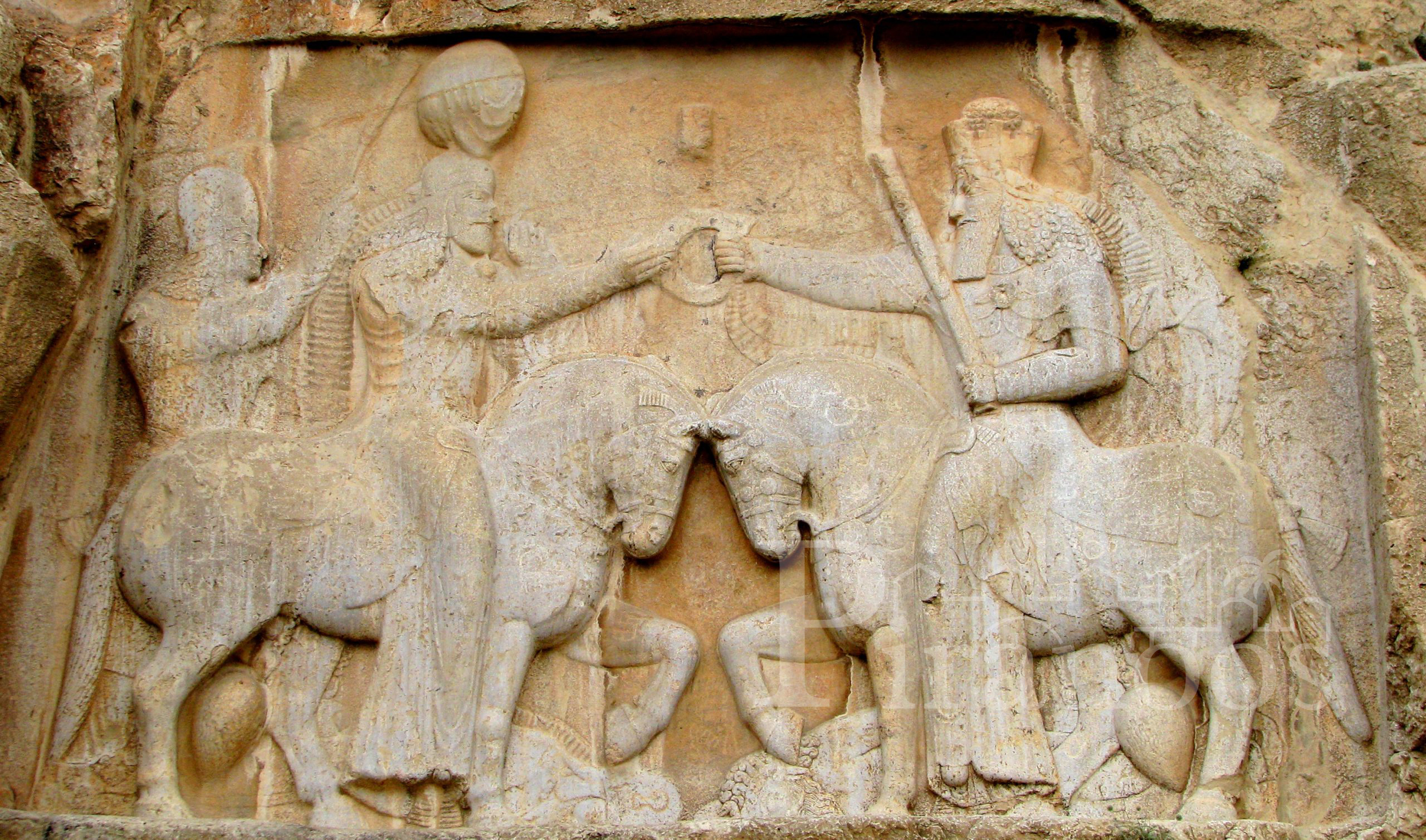The Naqsh-e Rajab is considered as one of the outstanding monuments of the pre-Islamic era in southwestern Iran. It is located three kilometers north of Persepolis, next to the Isfahan-Shiraz road. On the other side of the road is the ancient city of Estakhr. There are several Sassanid reliefs in this place. It was the birthplace of Persian great kings: Ardashir and Shapur and their ancestors, so they performed their coronation ceremonies there. The natural state of the rock is like a canopy. It is said that in this place a person named Rajab had a coffee house and that is why these Sassanid reliefs are known as Naqsh-e Rajab.
The Naqsh-e Rajab is one of the valuable works of ancient Persian rock carvings. The amazing relief and beautiful stone carvings in this place, along with a magical serenity makes this place one of the most important monuments in Fars province. This place is listed as a UNESCO World Heritage Site.
The relief of Naqsh-e Rajab includes four scenes: coronation of Ardashir Babakan, coronation of Shapur I, Shapur I and courtiers, as well as a single relief of Kartir, the Sassanid high priest.

This four-and-a-half-meter-long relief shows eight people, including men, women, and children. In this relief, which shows Ardashir Babacan’s coronation, Ardeshir receives a royal ring (or crown) and a royal scepter from Ahuramazda (the creator god of Zoroastrianism). Two children are seen between Ahuramazda and Ardashir. One of them standing in front of the king seems to be the crown prince, Ardashir Babacan’s son: Shapur I. Two other men are seen behind the king, one of them is a courtier companion, holding a fly whisk over the king’s head, and the other is one of the noblemen of the country, standing right behind the king with a state of respect. Two ladies of the court are also seen separately performing the rites and rituals of respect for the king. One must be queen and the other a noblewoman. Alongside them there is an inscription in Pahlavi language which says: “Zoroastrian religion was on the verge of extinction, which I revived. I Ardashir Shah!”

In this relief of the Sassanid king, Shapur I on horseback receives the royal crown or royal ring. The royal ring is presented to the king by the Mobbed (Zoroastrian great priest), who is also on horseback. In front of the naghsh-e Rajab there is a vast area that may have once had homes one day and was a prosperous place. The reliefs show there was a water fountain there, and in fact it was a beautiful sanctuary where two of the Sassanian kings depicted their coronation there.

It shows Shapur I on a large horse and nine of the country’s elders and noblemen stand behind Shapur I. The king’s horse has 4 lines inscribed on the Sassanian Pahlavi language on its chest, and at the other end there are 4 lines on the Greek language with the same content.
The old man without a beard with a hat on his head and the official outfit of that period is the famous Kertir. Kertir was a powerful and influential Zoroastrian priest during the reign of Sassanid dynasty. He lived in the reign of six Sassanid kings, from Ardashir Babakan to Narseh. It can be said that for almost a century this character was in charge of all affairs of the country.